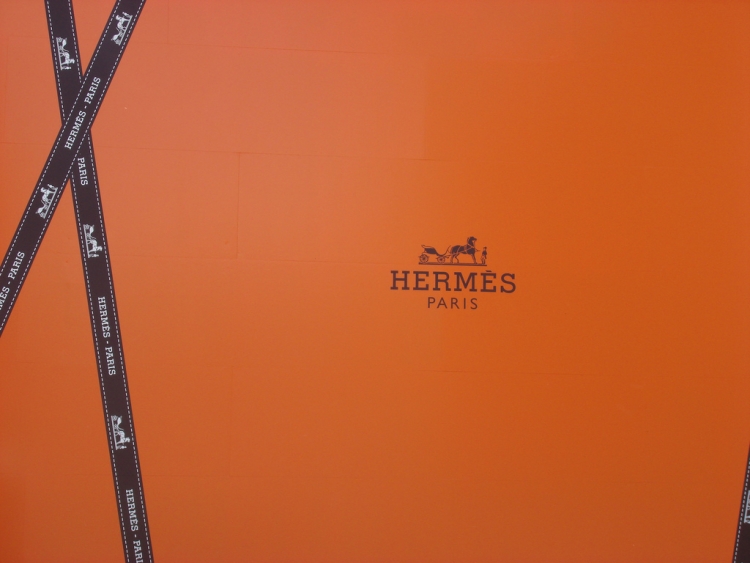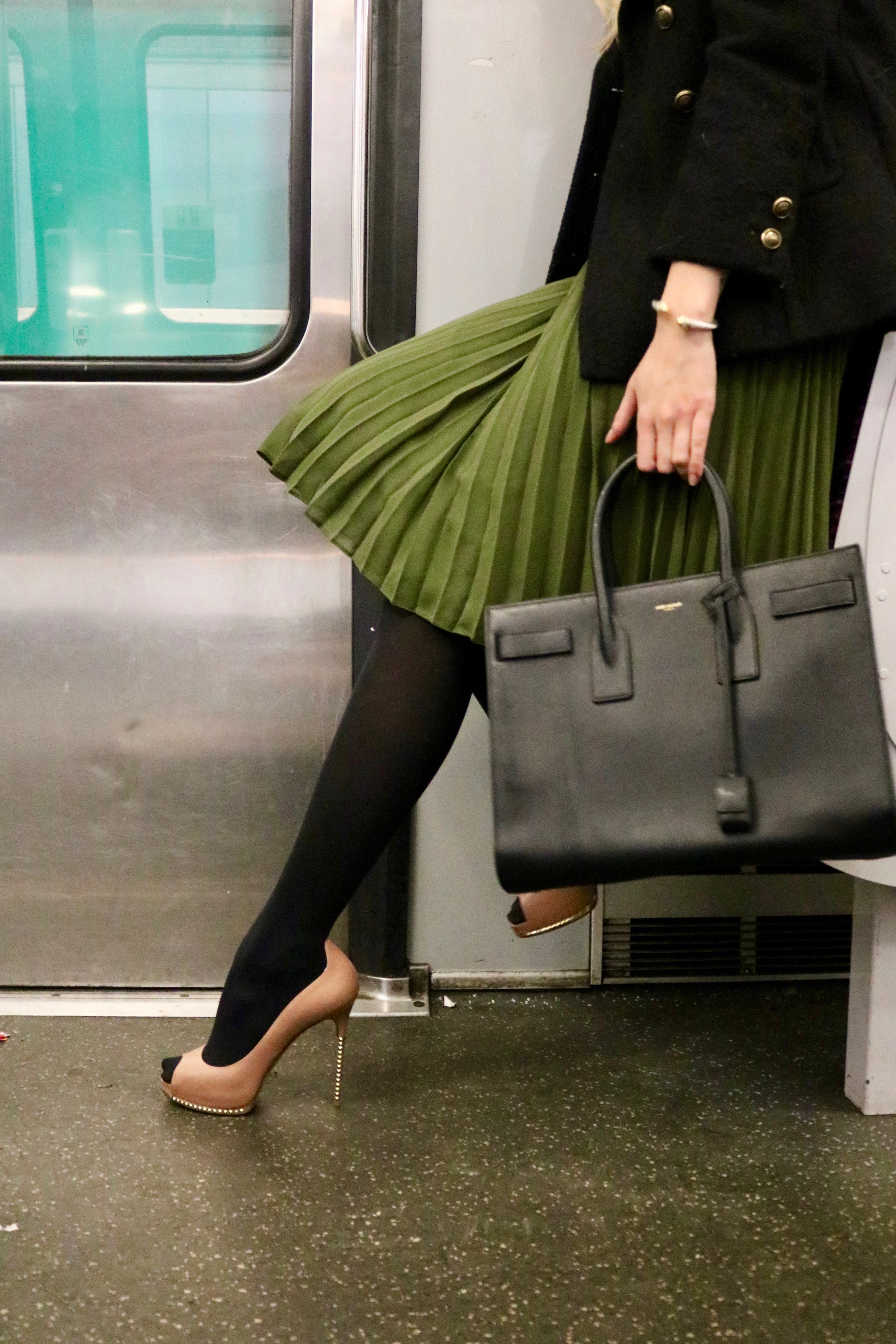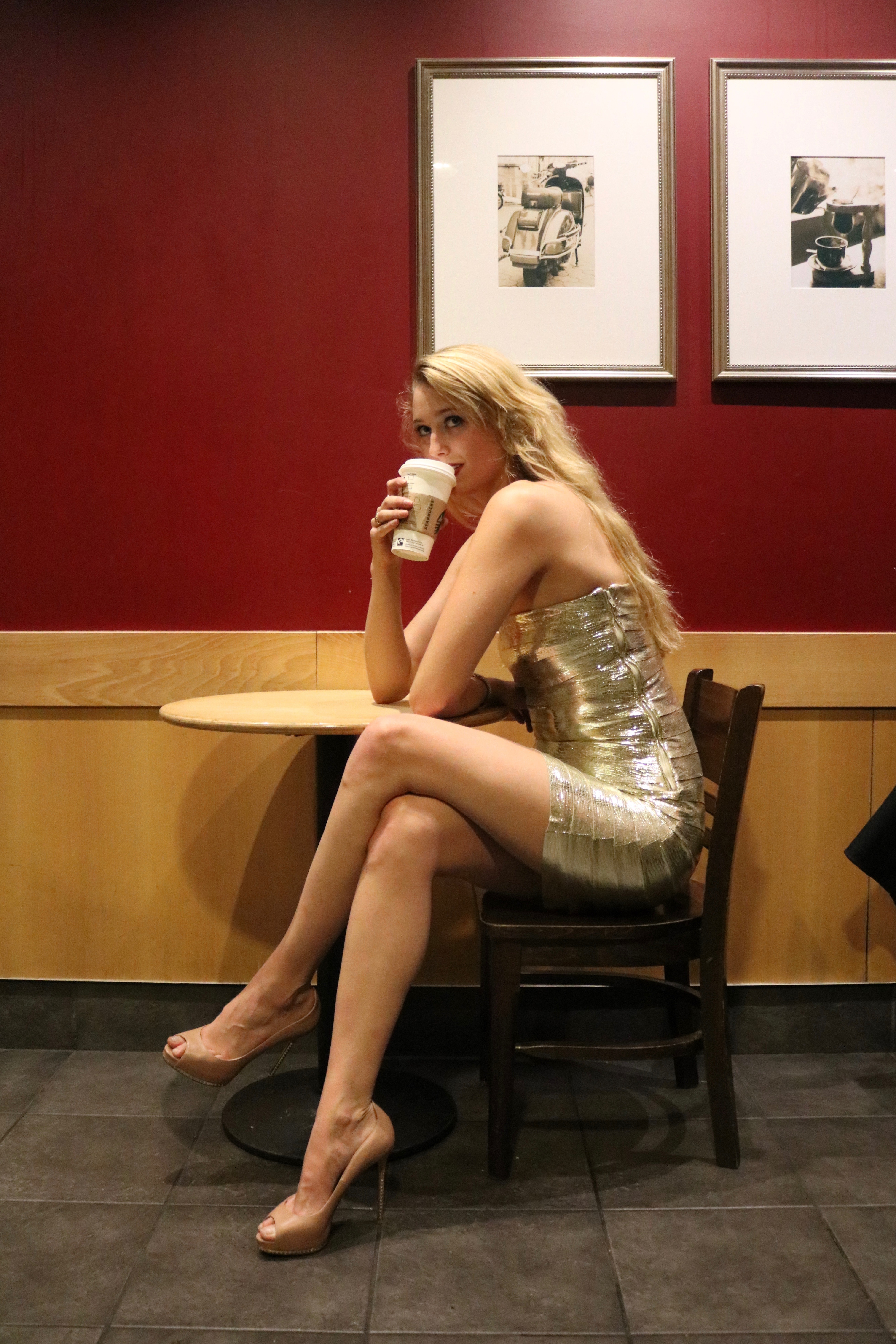What's Gucci?

The air was alive with the gleam of countless glittery boots reflecting in the sun. Women (and the occasional man) milled about in exquisite ensembles that cost more than my car, while professional photographers and stray Snapchatters alike scrambled to take their pictures. It was Paris Fashion Week, and I was standing outside the Chanel show at Palais Royal in hopes of filling out a portrait of the typical luxury consumer. I was fascinated with the interactions that surrounded me and overwhelmed by the countless stories I was witnessing. I was also in the wrong place.
The typical luxury consumer, it turns out, is more likely to be found at a Starbucks than a Chanel show. Sure, the elite—those select few celebrities, VIPs and socialites who are lucky enough to snag a seat at a top fashion show—participate in the luxury industry, but when it comes to the bulk of purchases, their contribution is minimal. In short, Kanye may be about to go Gucci in a luxury store, but it’s your ramen-eating roommate saving up for that velvet bag who drives the market. Yet, since its genesis, luxury has been intertwined with exclusivity.
There’s a fairytale many of us are familiar with that goes something like this: there is a prince who cannot seem to find a suitable wife. One dark and stormy night, a young woman claiming to be a princess arrives at his castle, seeking shelter. The prince’s mother tests this claim to royalty by placing a single pea beneath a lofty stack of mattresses for the woman to sleep on, on the basis that a true princess would notice even the slightest infringement to her comfort. The young woman endures a sleepless night. The prince rejoices. They marry. The end.
Despite its outlandish premise, there’s an underlying and enduring truth in “The Princess and the Pea.” The ability to identify and participate in the minute particularities in the world of luxury—whether you’re assessing mattress quality or shopping for a new pair of Louboutins—is a symbol of the elite.
Modern consumers strive to prove that they are purveyors of taste and knowledge; to establish themselves as “in the know,” or otherwise solidify their social status. What better way to do this than by possessing the latest, greatest, and most elusive items on the market? Whether they realize it or not, many consumers are drawn just as much—if not more—to the “it” status of an item as they are to the item itself. In many circles, “luxury” is synonymous with taste. The rise of shiny logos and ubiquitous shapes means the deeply discerning eye is not necessarily a requirement any longer. Rather, being fashionable is as easy as knowing what’s in and what isn’t.
Image credit: Jackie WegwerthFor a long time, the luxury good has been powerful simply by virtue of its symbolic value. These storied items have the ability to shape how we present ourselves to the world and how the world receives us. In fact, as of 2017, over 50 percent of luxury consumers have bought an item for the message it sends, according to a poll conducted by Deloitte. For some, this sort of conspicuous consumption—buying items simply to display status—is deeply rooted in personal identity.
Because of the aspirational world they represent, luxury goods allow customers to define and redefine themselves in the eyes of society. “Our concept of self is in a constant state of regeneration,” explains psychologist Peter Noel Murray. “Because luxury products have the power to change the consumer’s perception of who they are by altering the self, they deliver desired emotional end-benefits, including self-esteem and hedonic feelings such as satisfaction and power.”
But for others, buying luxury feels more like an obligation, rooted more in societal expectation than any personal desire. Janet Carr has over a decade of experience in the luxury industry, having worked as a marketing consultant for brands ranging from the mid-range Coach to the small but high-end leather goods company Ghurkha, but she definitely doesn’t consider herself a luxury person. However, this self- described value-seeker recently spent $2,000 on a Celine bag for the primary purpose of establishing credibility amongst her colleagues. She explains this choice by saying, “If you don’t look good, if you don’t carry a designer bag, they’re not going to take you seriously.” Carr isn’t alone. For many, owning luxury can feel like a prerequisite to success in life, whether you’re conducting interviews or just trying to get service in a store.
As the masses begin to recognize the value luxury has when it comes to defining who we are, the fashion houses also are starting to redefine their priorities—at the expense of “true luxury.” For a long time, the upper-class allure of exclusivity has been enough to drive luxury sales, but things are starting to change. As a result, companies have lately begun to shift their focus toward the masses, producing larger quantities, targeting broader demographics, and setting up shop everywhere but the moon (a fact you’re probably familiar with if you’ve ever strolled through an airport). This phenomenon, which analysts call the “democratization of luxury,” has seen the likes of Louis Vuitton and Dior evolve from small houses into major players in an estimated €250 billion industry. Thanks to an increase in affluence of the middle-class, the advent of the internet, and the 21st century corporate structures, middlemarket consumers are trading up for these mainstay “it” pieces, and the old rules of luxury are being thrown out the window.
Image credit: Jackie WegwerthBut therein lies a great paradox of the traditional luxury market: as more people buy into the luxury world, the less exclusive, and therefore less powerful, it becomes. Companies are caught between the need to commercialize in order to survive and the need to retain the image of exclusivity to remain relevant to the consumer.
Companies such as Hermès have approached this issue by making it extremely hard to buy some of their products—most notably the iconic Birkin bag. Danielle, a young woman studying at the American University of Paris (AUP) recalls having to visit two different Hermès stores, and being turned away multiple times, before she finally got put on a waitlist for the elusive bag. Madeleine Czigler, a fashion professor at the AUP with extensive experience in the industry, points to sales caps, a phenomenon that has been in action since the ‘80s, when luxury first began being mass produced, as an additional means of controlling luxury goods. She recalls, “I used to be approached by Japanese tourists who would give me 500 francs to go into Vuitton and buy them 5 purses.”
But, ultimately, luxury companies are losing this battle. According to a report from Bain & Company, a global management consultancy firm, the market for luxury is going to become even larger and more diverse over the next few decades, eventually reaching an estimated 500 million people by 2030.
While the Birkin bag will probably never be mainstream, the majority of luxury goods are on a path to accessibility and ubiquity—if they haven’t already gotten there today. The advent of the internet also poses a significant issue for companies that still rely on exclusivity. Marc Bain at Quartz magazine explains that, “for any company premised on keeping its high-end goods restricted to a select few and its brand image tightly controlled, e-commerce presents a conundrum. Can luxury reside just clicks away from fast fashion without losing some of its sheen? It’s a clash between exclusivity and inclusivity.” Notably, companies like Hermès and Chanel have refused to participate in the online market for precisely these reasons.
But this phenomenon doesn’t necessarily have to mean the destruction of the luxury market. It is simply changing the rules, emphasizing new values and transforming the landscape of luxury. This “new luxury” is less about the physical and more about the experience involved. “One fundamental aspect of all branding that still holds true is the consumer desire to be part of something,” explains Damien Madden, a writer for the online publication Luxury Society. “Yet, rather than being part of some exclusive club, with entry obtained via purchasing one of these luxury products, they’re now more interested in being part of a community. There’s great appeal in joining a group united by a common bond (in this case, a brand) to share similar ideals and aspirations.”
Image credit: Jackie WegwerthSo how do brands shift away from the long-touted idea of exclusivity into the new age of communal, experiential luxury? Embracing the internet is a good place to start. Though most luxury purchases still happen in store, Bain, in collaboration with Farfetch, an online platform for luxury retail, released a study claiming that 70 percent of luxury purchases are influenced by the internet in some way. This is hardly surprising; take a peek at your Instagram or Snapchat and you’re bound to find some trace of the luxury world. The internet is not only reducing gaps in consumer information. Through apps, blogs, and digital campaigns, it is adding a new level to the luxury experience, connecting buyers to a brand in a way that might not have been possible before.
For better or for worse, the advent of celebrity culture, largely made possible by the digital age, has also played an integral role in shaping the luxury consumer. “It’s about keeping up with the Kardashians,” was one student’s simple reply when asked why young people are spending their money on luxury goods.
The influence of screen sirens on consumer behavior has been evident since the days of Grace Kelly, but now Instagram muses and vlog queens have been thrown into the mix. They reach a broader, younger and more diverse audience, connecting with consumers on a deeper, and apparently more authentic, level. Brands are also seeking to involve the new consumer in other, sometimes more direct, ways. Gucci, for example, has a “shadow committee” composed entirely of people under 30, tasked with providing feedback on products and marketing processes. As one of the most touted brands of 2017, it’s no secret that such efforts to form a cohesive brand culture that engages the millennial consumer—not the fur-clad middle-aged shopper of yore—have played in Gucci’s favor.
We are in the midst of a fundamental philosophical shift when it comes to the meaning of luxury. For many, it is still about exclusivity, but with each new video campaign and airport store, we are moving further and further away from that. In this day and age, the luxury consumer—specifically the new, young, consumer—looks both to specific brands fabled for their “luxury,” but also for that brand to be more than a sum of its parts.










